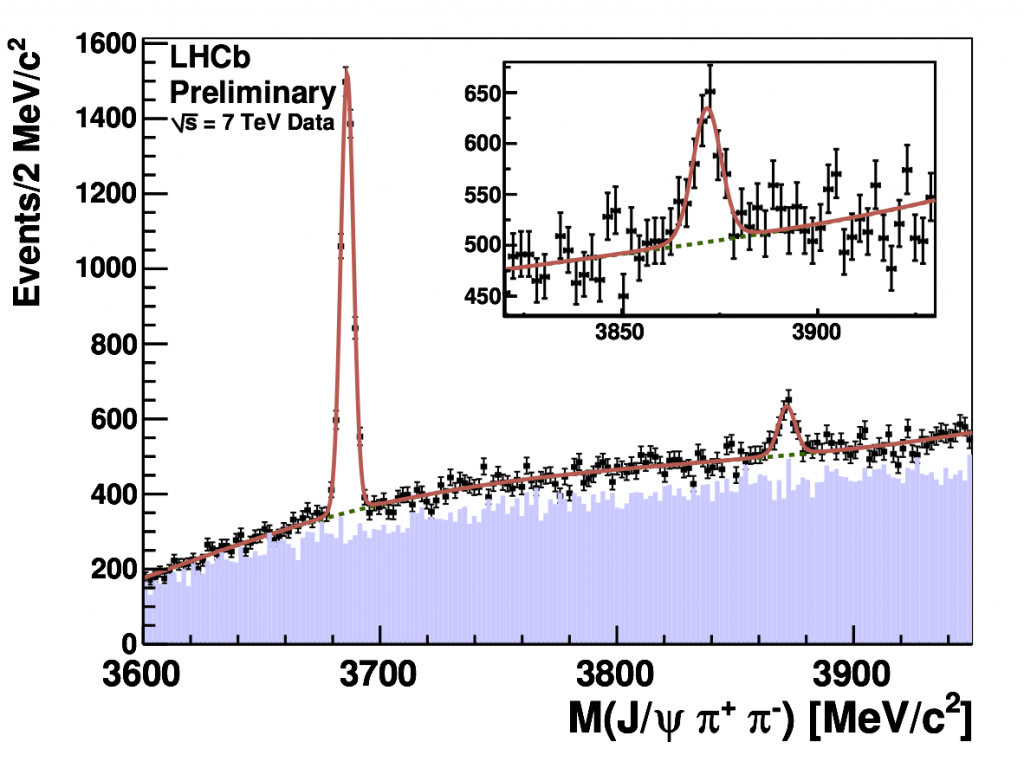In 1964 Murray Gell-Mann and George Zweig proposed the quark model (QM) in which mesons, like π mesons, are formed from quark and anti-quark pairs and baryons (like protons) from three quarks. The model is very succesful, but recently particles which could not be classified in this model have been discovered. LHCb has observed one of these exotic state candidates called X(3872) using its decay into a J/ψ meson (see 6 September news) and a π+ π– pair. The J/ψ decays in turn into a μ+ and μ– pair. The invariant mass of J/ψ π+ π– is shown in the figure below. The left enhancement at the mass of 3686 GeV is consistent with the QM bound state ψ’ of charm and anti-charm quarks, the right one at the mass of 3872 GeV has properties that are very difficult to reconcile with the Gell-Mann Zweig QM. Possible explanations include a meson-meson molecule (DD* for experts) or multi quark anti-quark system (diquark-diantiquark tetraquark meson for experts).

this plot was made using all data taken in 2010, click in the image to get it in higher resolution, click here to see original plot.
The particle with the mass of 3872 Gev was first observed by the BELLE collaboration in 2003 and is called X(3872). The observation of this particle at this early stage of data taking by LHCb confirms the excellent performance of the LHCb detector and data analysis.
